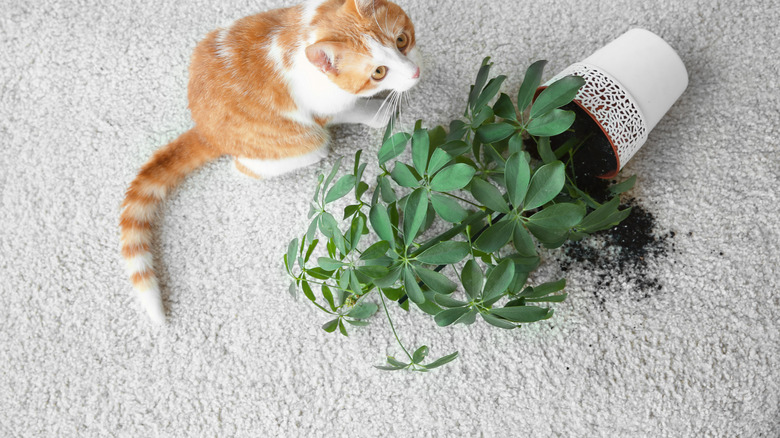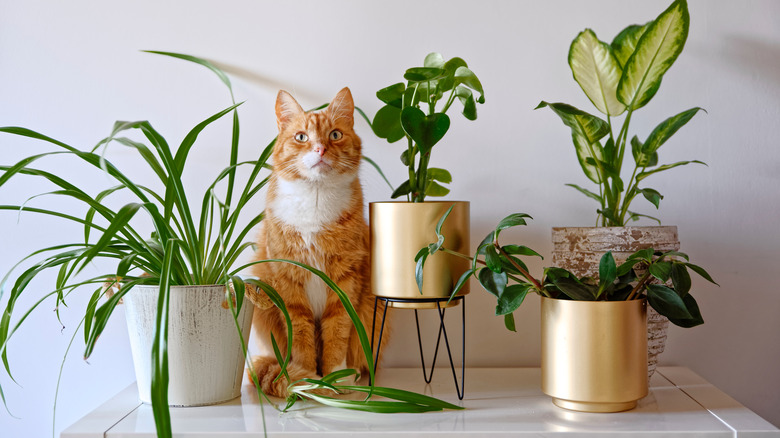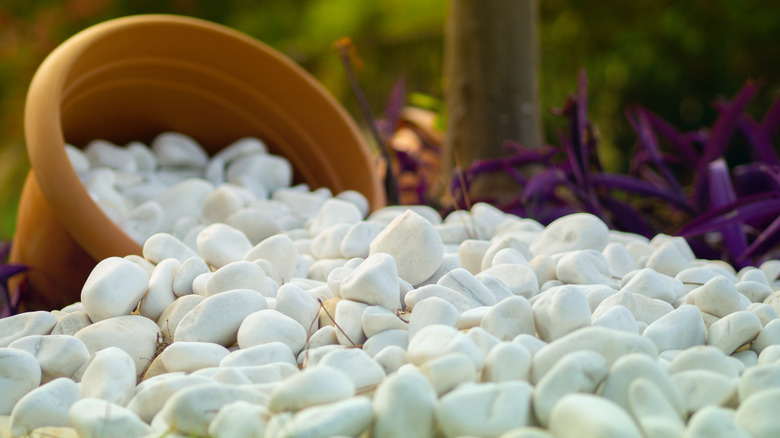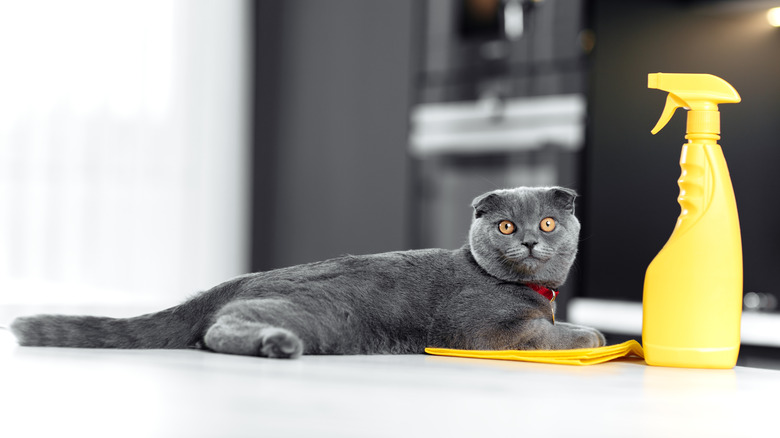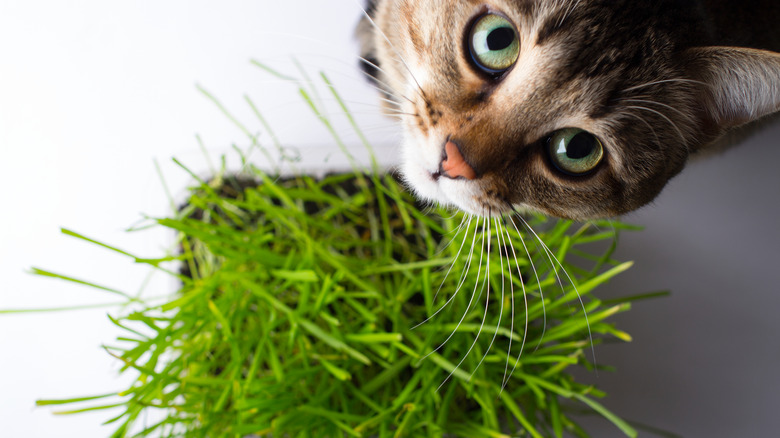5 Simple Ways To Cat-Proof Your Plants
Cats are mischievous pets known for getting into trouble. Not even your plants are safe from them playfully swatting at the flowers, chewing on the foliage, or digging in the potting soil. Luckily, there are many different tricks you can try to deter your cat from having fun with your plant collection. To find which cat-proofing method will work best for you and your feline, you need to know what attracts them to your plants.
BeChewy explains that cats are often attracted to plants when bored. However, there are more concerning reasons if your pets are eating the potting soil; they may be missing nutrients in their diet and would need to visit the vet. Less severe reasons why they attack your greenery may be because they like the taste, smell, or texture. A dirty litter box or empty food dish are other reasons why your cats could be trying to punish you by ruining your foliage. Once you know why your pets may be acting this way, you can better cat-proof your plants around the home.
1. Lay tin foil or double-sided tape
Most cats are skittish of loud and unfamiliar noises, making tin foil an excellent way to keep them away from your plants. This cat-proofing method works because every time they jump next to your plant, they land on the foil, making a loud noise and scaring them away (via TIME). Then they will connect the loud noise with the plant and no longer want to go near it. To do this, tear off a sheet of tin foil and place it loosely around your plants and over the edge of the pots. You want it to move and crunch when your cat touches it.
Double-sided tape will work similarly if your pet isn't scared of tin foil. Placing the tape around the counter your plant is on will create a barrier since cats don't like the feeling of their paws sticking to it as they walk over it. The only downside to these methods is that you will have to reset them throughout the day after your pet disrupts them.
2. Add orange peels
Orange peels are a natural way to keep your cats away from your plants. It works because, according to All About Cats, they have a sense of smell that is 40 times more sensitive than we do. They don't like the strong smell of citrus (via Cats Protection), so this method will work with your leftover orange, lemon, and lime peels. It's also a great way to recycle your waste instead of just throwing the scraps in the garbage.
To cat-proof your plants using this method, take your leftover citrus peels and place them in a circle around your plant in its pot. Your cat will smell the citrus and want to stay far away from the plant they used to love to destroy. Note that it's important to stick to only the peels and not go overboard by adding essential oils to your plant's soil because some oils are dangerous to animals (via ASPCA).
3. Place a layer of rocks
There are also ways to cat-proof your plants that don't cause a major eye sore. For example, placing a layer of decorative rocks over the soil is one method that looks pretty and stops animals from digging in the dirt or using it as their litter box. Natural Feline Care explains that cats like to use plants in place of their litter box when it's dirty because the loose soil has a similar feel to cat sand. It would be best to clean your pet's litter box more often while using this technique to prevent them from going to the bathroom in other places around your home.
With this method, per Snappy Living, choosing a larger stone is crucial so that cats won't be tempted to dig into the soil. If the stones were smaller, you would encourage your cat to use your plant as a bathroom because gravel-sized rocks feel like litter. The stones should be smooth (so as to not hurt your cat's paws) and completely cover the surface of the soil. You'll still be able to water your plants if the rocks aren't tightly packed.
4. Create a DIY repellent spray
Cats love to chew on the foliage of plants because they either smell good or they like the texture of the leaves. However, this can be dangerous because many houseplants are toxic to animals. Mixing your own DIY repellent spray is a natural way to cat-proof your plants and keep your pets from nibbling on poisonous leaves. There are two ingredients you can choose from that you likely already have in your home, mustard and black pepper (via Pet Keen).
Mix a couple of spoonfuls of ground mustard in a spray bottle with water. Then apply it all over your plant's foliage and soil. To use ground black pepper, mix 2 tablespoons with hot water. After it has cooled, pour it into a spray bottle and apply it to your plants. Another variation on this method is to purchase a commercial pet repellent spray; if you would rather not create your own. You must reapply these solutions about every two days to keep your cat away.
5. Give them their own plant
Embracing your cat's attraction to plants by giving them their own collection is one rewarding way to keep them off your greenery. It's a fun method to distract your pet while providing a safe outlet for them to chew and swat. Catnip is the most popular plant that people purchase for their pets, but other common herbs are also safe. According to Pets Plus Us, cat thyme, parsley, rosemary, and wheatgrass are good choices.
Once you have these plants, put them in small pots so your pets can't dig in the soil and use it as a litter box. You will also want to watch how much your cats eat because even though these cat plants are safe, consuming too much is not good. To effectively use this method, you will also need to move your houseplants where your cats can't reach them or choose one of the previously mentioned cat-proofing techniques.
